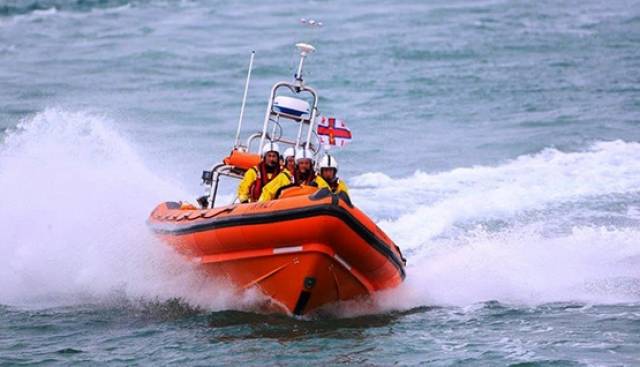The annual Mass in remembrance of all those lost at sea, and for their families will be celebrated in Helvick Lifeboat Station on Helvick Pier in Co.Waterford on Friday night of next week, May 13, by RNLI Station Chaplain Fr. Conor Kelly at 7.30pm.
A memorial in memory of those Lifeboat men who have lost their lives in the service of the RNLI saving others at sea on this coastline will be unveiled on Helvick Pier before the Mass begins. Nicholas Hannigan of the Dungarvan and Helvick RNLI Fundraising Branch said: “In 1852 the following brave local men lost their lives: Thomas Crawford, Capt Maurice Duggan, Laurence Lenihan, John Maher, Thomas McNamara, Maurice Mulcahy, Michael Raher and John Whelan. In 1895 Michael Hogan gallantly lost his. It is fitting that heroes from all around the Dungarvan Bay area should be remembered at home too and we hope their descendants can join us for the unveiling! Everybody is welcome to attend.”
 Helvick Lifeboat RNLB Robert Armstrong with crew Alan Kelly at the helm with Dónal Ó Faoláin, Terence Morrissey and Mike Tobin
Credit: Patrick Browne
Helvick Lifeboat RNLB Robert Armstrong with crew Alan Kelly at the helm with Dónal Ó Faoláin, Terence Morrissey and Mike Tobin
Credit: Patrick Browne
We've got a favour to ask
More people are reading Afloat.ie than ever thanks to the power of the internet but we're in stormy seas because advertising revenues across the media are falling fast. Unlike many news sites, we haven’t put up a paywall because we want to keep our marine journalism open.
Afloat.ie is Ireland's only full–time marine journalism team and it takes time, money and hard work to produce our content.
So you can see why we need to ask for your help.
If everyone chipped in, we can enhance our coverage and our future would be more secure. You can help us through a small donation. Thank you.






























































